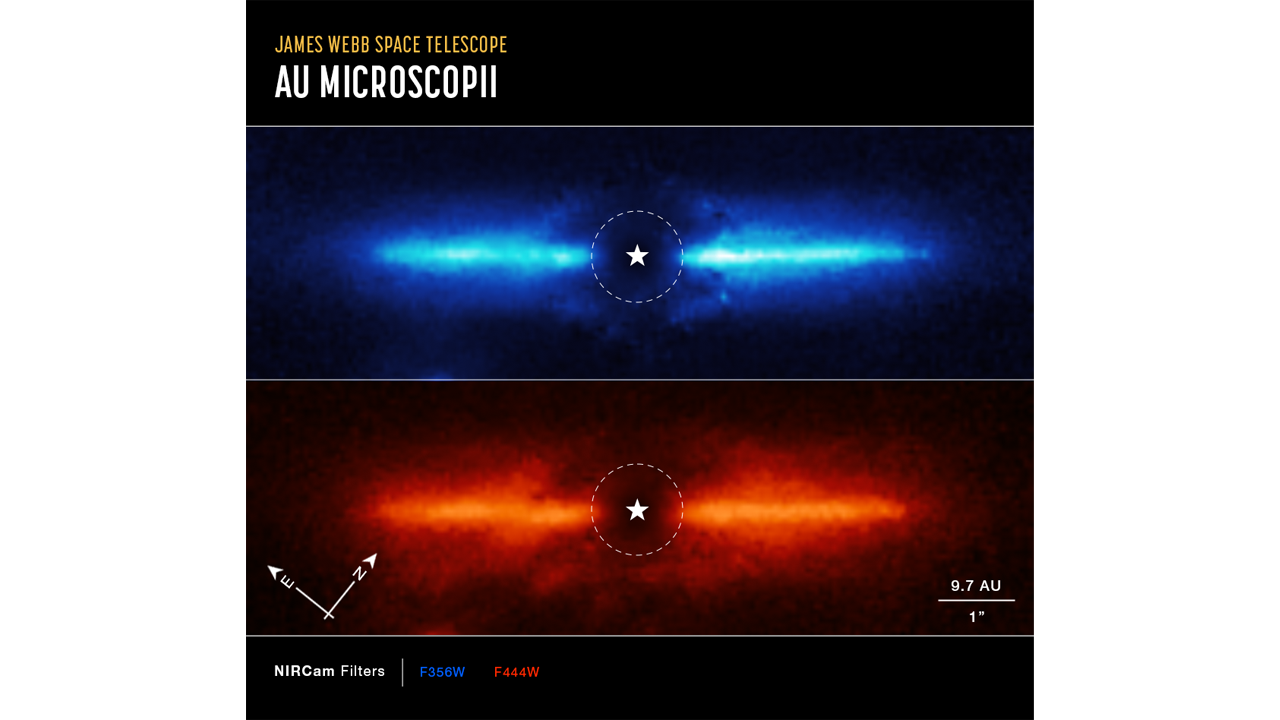About
I am a NASA Postdoctoral Program Fellow at NASA Goddard Space Flight Center studying exoplanetary systems through high-contrast imaging. My current research focuses on the use of JWST to search for and characterize outer giant planets and debris disks around nearby stars. As part of this work, I’ve led major studies on the AU Mic and Fomalhaut C debris disk systems, co-authored many similar studies, and developed the Winnie software: a science-enabling tool for post-processing and analysis of circumstellar disk systems observed with JWST.

Press release images of the AU Microscopii debris disk at 3.6 and 4.4 microns as observed by JWST/NIRCam (reported in Lawson et al. 2023).
Deconvolution of simulated JWST NIRCam coronagraphic observations of the AB Aurigae protoplanetary disk system using Winnie. NIRCam’s shaped pupil produces a complicated blurring pattern that otherwise all but precludes detailed study of disk structure. Winnie’s deconvolution procedure corrects for this blurring to make such studies possible.
Before JWST, I worked with the Subaru Telescope’s SCExAO/CHARIS instrument, where I developed the spectropolarimetry pipeline and created post-processing algorithms to enable discoveries like AB Aurigae b, a candidate disk-embedded protoplanet. My broader work spans planet discovery, atmospheric characterization, disk characterization, and the development of novel post-processing algorithms — with the common goal of uncovering how planets form, evolve, and shape their environments.
